The 1906 pure food and drug act was set up to protect US citizens from unregulated and potentially harmful products. Implementing the regulation has presented the US Food and Drug Administration with many high-profile challenges, as Fiona Case finds out.
The 1906 pure food and drug act was set up to protect US citizens from unregulated and potentially harmful products. Implementing the regulation has presented the US Food and Drug Administration with many high-profile challenges, as Fiona Case finds out.
This month marks the centenary of the founding of the US Food and Drug Administration (FDA). The history of this government agency, which regulates more than a quarter of US commerce and influences production of food, drugs, cosmetics and medical devices in the world, has all the ingredients of a great story: human suffering, greed, politics, noble acts, popular revolt and civil action. It is also a story about chemistry, and about a group of chemists who set out to make the world a safer and healthier place.
Until the US pure food and drug act was introduced in 1906 there were no regulations on US manufacturers of food or drugs. ’Federal interference in commerce was a hateful notion in Washington at that time; intrusion upon business was not to be countenanced,’ explains Philip Hilts in his book on the FDA’s history. ’The business leaders were not called robber barons for nothing; the era has been described as the most shameless in American history,’ he adds.
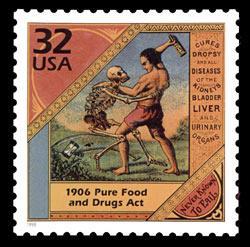
At that time, one of the most profitable businesses was manufacturing and selling patent medicines. The only proof of efficacy offered for these ’secret formulas’ was the testimonial that someone, somewhere, had found the product beneficial. Advertisements for remedies were pasted on every wall and filled the magazines and newspapers.
The practice of giving squalling infants ’soothing syrups’ that were laced with opium, morphine, cocaine or acetanilide led to thousands of deaths. People were persuaded to take patent medicines rather than seek real medical help. More amusing, perhaps, was the marketing of nostrums such as Lydia Pinkham’s vegetable compound (which was 20 per cent alcohol by volume) to women in the temperance movement.
Food safety also suffered from this unfettered capitalism. Colourings and preservatives, including formaldehyde, borax and benzoic acid, were used to make decaying products appear palatable. Inedible fillers such as chalk, clay, and ground-up insects were added to bulk out foods.
In 1883, Harvey Wiley, Indiana State chemist and professor of chemistry at Purdue University, took up the post of chief chemist at the Department of Agriculture, Washington DC, US. As he studied foods and medicines in the department’s Bureau of Chemistry (the forerunner of the FDA), he became outraged at the abuses he uncovered. He became the leader of the ’pure food crusade’; the inevitable backlash against the extremes of the robber barons.
Issues of regulation are often portrayed as a battle between the FDA and industry, but the 1906 law was supported by several companies anxious to create a level playing field. H J Heinz was one of these. ’Howard Heinz had a competitive advantage if the food and drug act was passed,’ says Idamarie Laquatra, current director of global nutrition at the H J Heinz Company. Heinz had developed a way to create tomato sauce without preservatives and wanted his competitors to label their chemically preserved products.
Food and drug act
Peter Barton Hutt was chief council for the FDA from 1971 to 1974 and has studied the early legislation. ’In 1876 Dr E R Squibb [founder of the drug giant with the same name] made a famous speech to the New York Medical Society, asking for a nationwide food and drug law. Ten days later the first bill was introduced,’ he explains. ’The equivalent of today’s US Chamber of Commerce, then called the National Board of Trade, offered a $1000 reward for the person who could draft the best national statute. The winner was a public analyst from England, who plagiarised the 1875 British food and drug law. That was basically the law that 27 years later became the food and drug act."
The law was resisted, repeatedly, by senators with links to the food industry. It was finally pushed through by some of the earliest examples of consumer activism, particularly by newly formed women’s groups fighting for food safety standards, and by muck-raking journalists who set out to expose the fraud in the patent medicines business.
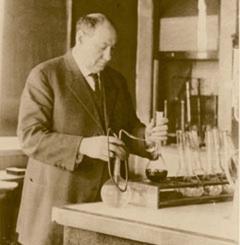
Public opinion, and prompting by Wiley and the American Medical Association, persuaded President Theodore Roosevelt to support the act. In his December 1905 state of the union speech he made his support public, and on the 30 June 1906 it became law.
The Department of Agriculture’s Bureau of Chemistry and Wiley, its chief, were now very busy. From the basement of the Patent Office (now the National Portrait Gallery) they started to challenge the worst abuses in food and medicine. But they didn’t win all their battles. ’After the law was in place, sugars and syrups could not be faked by using glucose,’ says Hilts. But because the glucose was obtained from corn, one manufacturer came up with idea of calling it corn syrup. ’It sounded natural; moreover, it avoided the word ’’glucose,’’ which people associated with unwholesome glues,’ explains Hilts. Wiley objected, the manufacturers fought back, and the whole matter ended up on the president’s desk. Exasperated, he decided for the manufacturers.
Push for power
Although a small agency operating on a miniscule budget, by the 1920s the Chemistry Bureau was bringing between 500 and 1000 criminal prosecutions of companies each year. The 1906 act provided the means to prosecute manufacturers who sold misleading drugs or adulterated food, but it didn’t provide food standards. The law didn’t apply to cosmetics or medical devices, and only allowed action after a product was on the market.
The bureau pushed for greater powers. Ruth De Forest Lamb, the bureau’s chief educational officer, organised consumer support for a new law. She created the American Chamber of Horrors, a multi-media presentation highlighting products such as Lash Lure, an eyelash dye containing p-phenylenediamine that caused horrific blisters, ulcers, and even blindness for some. The exhibit was very popular - the crowds flocked to see its gruesome contents. But it was the deaths of more than 100 people in 1937 from ’elixir of sulfanilamide,’ an untested solution of the drug in diethylene glycol, that finally forced the government to act.
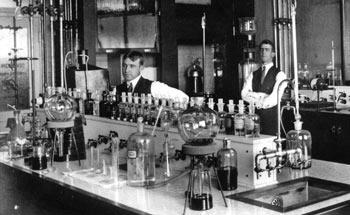
The revamped 1938 law provided for food standards, addressed the safety of cosmetics, and required that drugs were checked for safety before sale. ’The law made it clear that companies could not survive without scientists and laboratories,’ says Hilts. ’They would have to, at least, produce scientific tests of safety.’ The number of industrial chemists employed in US drug companies jumped from a few thousand in the 1920s (mostly involved in processing), to 58,000 in the 1940s.
The next turning point for the FDA was the prosecution of Joseph Dotterweich, president and general manager of the Buffalo Pharmacal Company, in 1943 for adulteration and misbranding of drugs. Dotterweich complained that he knew nothing about the violation. He wasn’t even in the country when it occurred. It was an argument that had worked in the past. But this time, says Hutt, ’the Supreme Court ruled that the FDA did not need to prove criminal knowledge or intent.’ Dotterweich was found guilty and fined. The concept of ’liability without fault’ was introduced. Ignorance was no longer an excuse. ’That is why FDA enforcement is taken so seriously, not just by the agency, but by anyone subject to FDA jurisdiction,’ explains Hutt.
Challenging times
Over the next decades the FDA fought thousands of battles and faced many high profile challenges. By the 1980s they had developed a complex, multi-stage system for establishing drug safety and effectiveness. The paperwork mounted, and the process got slower. New drug approval was taking more than 20 years. But this was the age of Aids. Healthy young men and women were dying horrible deaths from an incurable disease. A new wave of activists, many of them already HIV positive, wouldn’t wait 20 years. In 1988 roughly 1000 protesters blocked the entrances to the FDA building, effectively shutting it down. Within a week, the FDA announced changes in its procedures, streamlining the approval of promising anti-HIV therapeutics.
Recently the FDA was presented with a first amendment challenge when the Supreme Court ruled that health claims on food packaging were ’free speech’. ’The FDA must now permit health claims that are not based on scientific consensus, so long as the consumer is not misled,’ explains Barbara Schneeman, director of the FDA Office of Nutritional Products, Labeling, and Dietary Supplements. This has led to the appearance of ’qualified health claims’. If there is some credible evidence for the claim, but no scientific consensus, then a qualifying statement must be displayed.
Today’s concerns
And so we come to the present day - surely a more enlightened era than the last century. ’We have established a track record of performance that makes it possible for Americans not to worry about the food they eat; to be able to get up in the night and take medicine; to use medical devices and not to worry about the safety and effectiveness,’ claims Andrew von Eschenbach, acting commissioner of the FDA.
Yet the same issues return. In 2006 there are concerns about excessive (and potentially misleading) direct marketing of medicines, and calls for greater disclosure of drug information (particularly on herbal remedies and supplements). People still die from taking the drugs that were supposed to heal them. Industry is still trying to maintain that corn syrup is a natural product (Cadbury Schweppes recently labeled their 7-Up brand of water, corn syrup, and flavourings as ’all natural’).
The pendulum appears to be swinging back towards the interests of commerce. ’The Bush administration is generally and implacably opposed to government regulation,’ claims Michael Jacobson, executive director of the Center for Science in the Public Interest in Washington DC.
There are concerns about undue political influence on FDA’s decisions - for example the religious right’s attempts to block ’Plan B’ emergency contraception, and about future funding for the FDA.
For the first 86 years of its existence all FDA funding came through government appropriations. In 1992 a law was enacted to make companies pay for a large proportion of the work done on their new drug applications.
In 2002 this concept of ’commercial user fees’ was extended to fund approval of medical devices. ’This legislation creates a system in which the fox is guarding the hen house,’ warns Frank Clemente, director of Public Citizen’s Congress Watch, Washington, DC. Even with this new revenue source there is a concern that the agency is under-funded for its mission. ’The FDA watchdog - once the ’’gold standard’’ for other nations - has been neutered by budget cutbacks,’ warns Jacobson.
Leaders from the FDA and industry discussed the current challenges and future possibilities at a recent conference held at the Chemical Heritage Foundation in Philadelphia to mark the centenary of the FDA. In the area of food regulation, Robert Brackett, director of the FDA Center for Food Safety and Applied Nutrition, claims to face new challenges following the 2002 bioterrorism act. ’We have been focused on nutrition and on food labelling,’ he says. ’But now we must also focus on food defence and look at the possibility of widespread deliberate poisoning. It’s a change in philosophy.’
The FDA also faces the challenge of harmonising regulations with those in other parts of the world. While the UK debates ways to highlight further unhealthy levels of fats, sodium and added sugar in foods, FDA labels on foods marketed to a population with a serious obesity problem don’t even list the amount of added sugar.
’Recent controversies about the antidepressants, the SSRIs [selective serotonin reuptake inhibitors], Vioxx and related drugs are resulting in important changes,’ says Steven Glason, Director of the FDA Center for Drug Evaluation and Research. ’The message that I’m hearing is that the FDA is sitting on way too much information,’ he admits. ’There will be a huge increase in the amount of data that is posted to public sources about clinical trials.’ This will allow scientists who were not originally involved in the trial to make use of the data - and perhaps find something new there.
Molecular future
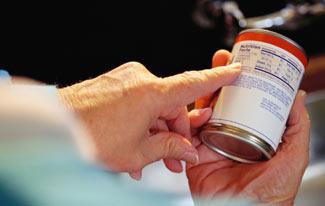
’We are beginning to understand disease and the concept of health from a genetic, molecular, and cellular perspective; moving from a macroscopic and microscopic understanding to a molecular understanding,’ says von Eschenbach. ’The future will look no more like the past than a butterfly looks like a caterpillar,’ he suggests. Apparently the FDA is looking forward to the challenge.
Fiona Case is a freelance science writer based in Vermont, US.
Further Reading
- P J Hilts. Protecting America’s health: the FDA, business, and one hundred years of regulation, 2004, UNC Press
- F Hawthorne. Inside the FDA: the business and politics behind the drugs we take and the food we eat, 2005, Wiley
- S H Adams. The great American fraud, Collier’s Weekly, 7 October 1905
Policing food and drug standards through history
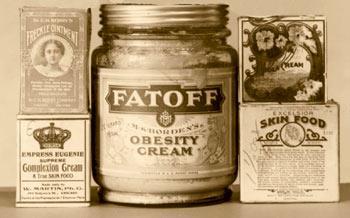
- Babylon, about 1700 BC: The Hammurabi provided the death penalty for those who watered down beer.
- England in the 13th century: A baker who cheated people could be ’drawn on a hurdle from the Guildhall to his own house, through the greatest streets, where the most people are assembled, and through the streets which are most dirty, the false loaf hanging from his neck’. And that was for the first offence.
- Turkey in the 18th century : A baker who sold underweight or adulterated bread could have his ear nailed to the door-post of his shop.
- California, US, 1995: William Stacey was jailed for five years for selling Immunostim, a mixture of substances found in dish detergent and toilet bowl cleaner, as an injectable cancer cure.




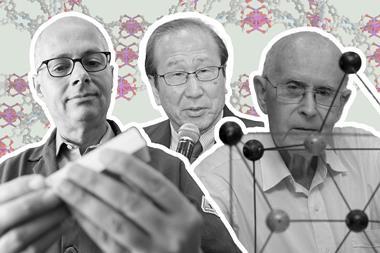

No comments yet